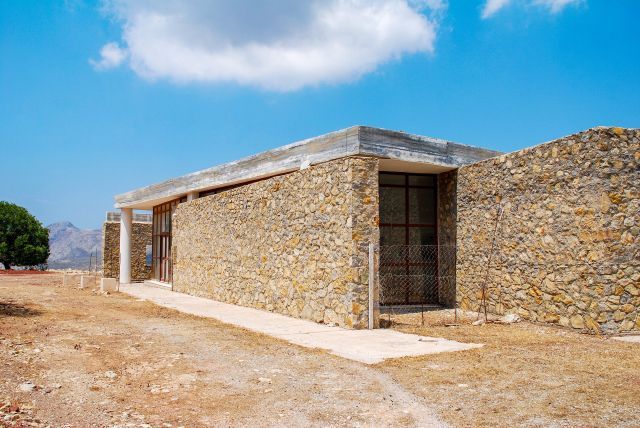Tilos Sights & Attractions

Tilos is a tiny island of the Dodecanese, popular among free campers and people who are seeking for some quietness in their holidays. Although Tilos is an unknown island, it has a rich history and geological past. In fact, traces of Neolithic items and animal fossils have been found in Charkadio Cave in the center of the island. The most interesting site in Tilos is the Monastery of Saint Panteleimon, protector of the island, while a nice place for a stroll in the abandoned village of Mikro Chorio. In general, Tilos is a great place for hiking to secluded beaches and old monuments.
You can see below the best Sites in Tilos. You can filter them by category and location.
Let us plan the trip of your dreams!
Book online with us your ferry tickets, hotels and more, easily!

Medieval Castle
CastlesThe Medieval Castle is located on top of a steep mountain, right above Megalo Chorio. It was constructed by the Knights of Saint John and climbing up there is a difficult task.

Monastery of Agios Panteleimon
ChurchesThe Monastery of Saint Panteleimon is the most important church on Tilos and the protector of the island. It is located at the end of the only road on Tilos.

Charkadio Cave
OtherCharkadio Cave is located in the center of the island, about 2 km south of Megalo Chorio. This cave is of great paleontological importance, as this is where the first fossiled teeth of dwarf elephants were found. The findings are hosted in the Paleontological Collection in Megalo Chorio.
Archaeological Collection
MuseumsThe Archaeological Collection of Tilos exhibits pieces of classical vessels, small statues, ancient inscriptions and sculptures from the Classical and the Hellenistic Times. These findings were excavated on the island, mostly in the valley of Lakia, close to Megalo Chorio.
Paleontological Collection
MuseumsThe Paleontological Collection of Tilos is of special interest. It presents the findings from the excavations of Charkadio Cave in the center of the island, where ancient pieces of pottery, Neolithic tools, and fossils of dwarf elephants were found. There are also drawings and photographs from the excavations, which were held in the 1970s by the professor of geology, Nikolaos Symeonides.

